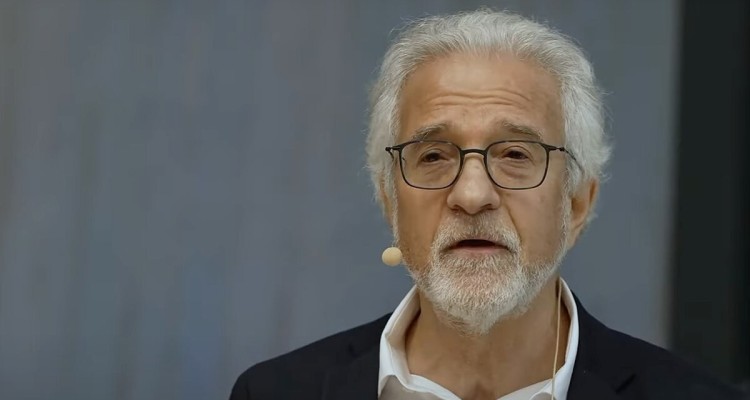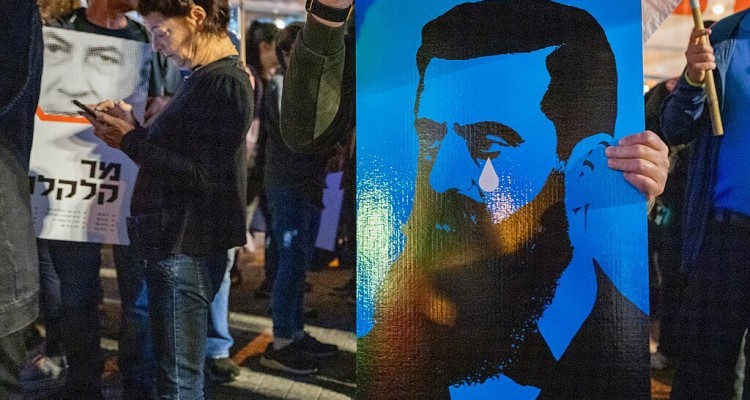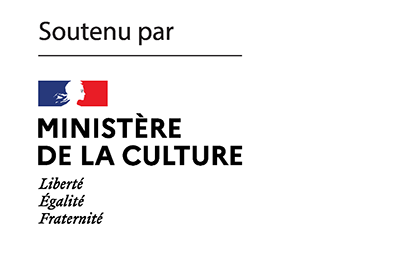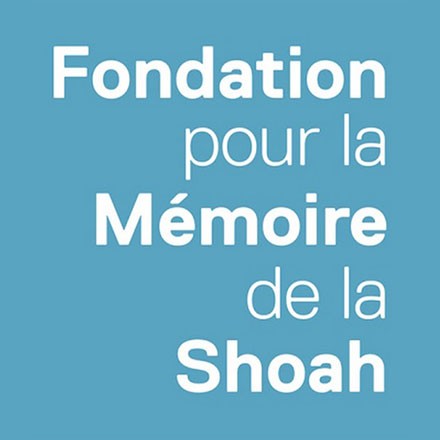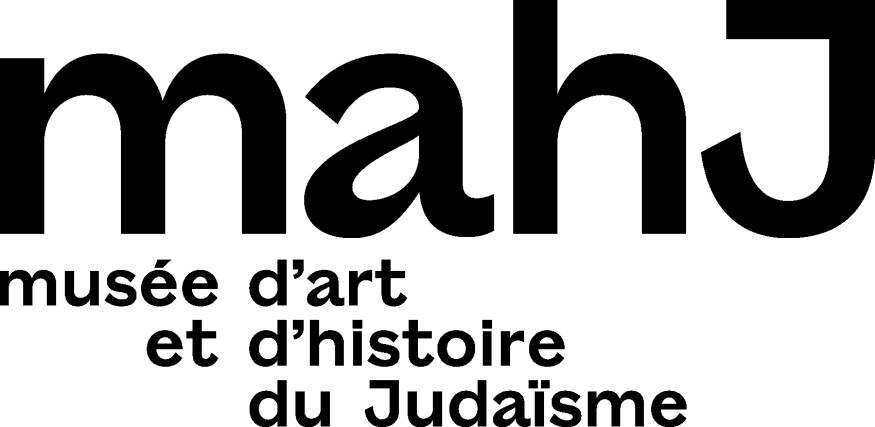In one of Omer Bartov’s latest books Tales from the Bonderlands. Making und Unmaking the Galician Past (Yale University Press, 2022) he writes about an almost forgotten “end of the world” – that of a Galicia where Jews, Poles and Ukrainians lived side by side – whose memory the historian seeks to narrate from its tales and legends. Boris Czerny provides a critical account, noting that Bartov’s nostalgia for this lost Eden-like land is matched by a mistrust of the way in which Jews have taken over another “end of the world”, which would appear to have turned them into “bullies”.
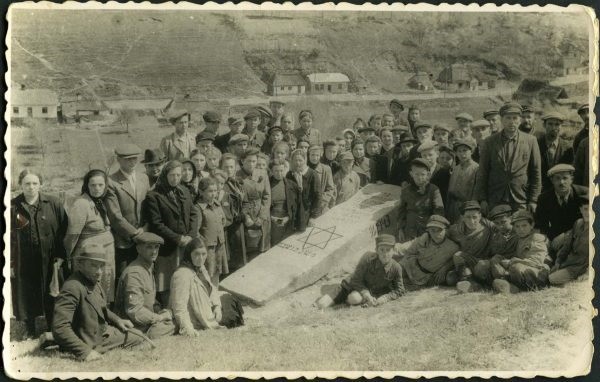
In the preface to one of his latest books, Omer Bartov[1] spells out the logic that led him to write a book about Galicia as a model of the spaces of multi-ethnic co-existence destroyed during the Second World War, adopting an intimate writing of history, a history with a lower-case “h” in the “first person” (p. 10), that of the men and women who inhabited Buczacz, the hometown of his mother, who emigrated with part of her family to Palestine in 1935. After publishing a study, evocatively titled Erased,<footnote>Erased: Vanishing traces of Jewish Galicia in Present-day Ukraine, Princeton, Oxford-Princeton University Press, 2007</footnote> on the state of ruin left in Galicia by the Germans and Soviets, as well as on the memorial policy pursued in Ukraine, he set out in Anatomy of a Genocide to analyze how, in Buczacz, the Jewish population had been massacred with the complicity or under the indifferent gaze of members of the other two ethnic and religious groups, Poles and Ukrainians, with whom the Jews had shared daily life for almost four centuries. At this time, while already working on the composition of Voices, War and Genocide[2], reproducing the testimonies of a Polish school principal during the First World War, a Ukrainian school teacher at the time of the German and Soviet occupations, and a Jewish survivor of the Shoah, Omer Bartov had felt a fascination for the many tales and legends told by the different religious and ethnic communities of Buczacz about their past, that of their town. And so he conceived Tales from the Borders.
This part of the world no longer exists, it has disappeared, it is no more than a “fragment of memory”, a smell and a taste, that of the chicken broth prepared by his mother.
Throughout the first three chapters, entitled “Where did we come from? (With fire and sword)”, “What did we become? (Faith and reason)” and “Where did we go? (Encounters with modernity),” Bartov organizes his “narrative” (the term is used several times) within the long history of the Ruthenian, Polish and Jewish populations who cohabited in Buczacz, summoning up the bookish and oral heritage, the tales and legends that were both shaped by this frontier region and, in turn, constructed the memory of these lost places, this far corner of the world, “ek Velt” in Yiddish (pp. 368, 414), considered by Poles and Ukrainians as the cradle of their national identity and by Jews, depending on the period, as a paradise reminiscent of the Land of Zion, (p. 43) or, on the contrary, a “Half-Asia” on the border between Western civilization and the primitive East, an expression used by Hanna Arendt to qualify the origin of the public present at the Eichmann trial. This part of the world no longer exists, it has disappeared, it is no more than a “fragment of memory” (p.414), a smell and a taste, that of the chicken broth prepared by his mother (p. 320).
From the outset of the book, Omer Bartov asserts his decision to turn his back on documented sources, so as not to be overwhelmed by demographic and ethnographic data that, in his view, do not allow us to get to the intimate perception of places (p. 56). He also asserts the centrality of his own memory and, in particular, his bookish memory, summoning texts, authors and personalities who, in his opinion, best embody the history of the Ukrainian Galician borderlands. Thus, the changing relationship between the three main communities, the emergence of an increasingly virulent nationalism from the People’s Spring of 1848 onwards, and the entry into modernity are illustrated by quotations from Ukrainian authors, Gogol, Panteleimon Kulish (written Koulich in the book) (p. 89), extracts from the works of the founding poet of modern Ukrainian literature, Taras Chevtchenko, and Ivan Franko. The text is also enhanced by testimonials from Polish and German travelers such as Maciej Bogusz Stęczyński (p. 295) and Ulrich von Werdum (p.86). Karl Emile Franzos, the father of psychoanalysis Sigmund Freud (p. 243-245), as well as the author of the Warsaw ghetto chronicles, Emanuel Ringelblum and Shmuel Yosef Agnon (the list is not exhaustive), are summoned to represent Jewish cultural and intellectual life.
The association of these personalities in the same study raises a question of method. Omer Bartov does not specify the criteria he used to compile his corpus. He does not distinguish between fiction, stories, poetry or prose, and scientific texts such as extracts from ethnologists’ diaries. The process itself is not objectionable, but it would have been necessary to explain and justify it. What’s more, this aggregation of names raises questions about the spatial and therefore political limits of a book whose title raises the issue of borders. If the study is confined to Galicia, as the title of the book in English specifies, the presence of Gogol, a native of Poltava, that of Kulish, born in Voronij not far from Soumy, in north-western Ukraine, is not justified, nor is that of Freud, who was born in Freiberg. If, on the other hand, it is a question of “making and unmaking the past in the Ukraine”, in the whole of the Ukraine, as the French title suggests, we are entitled to wonder about the unmentioned authors, the forgotten cities, Odessa and Kiev, to name but two.
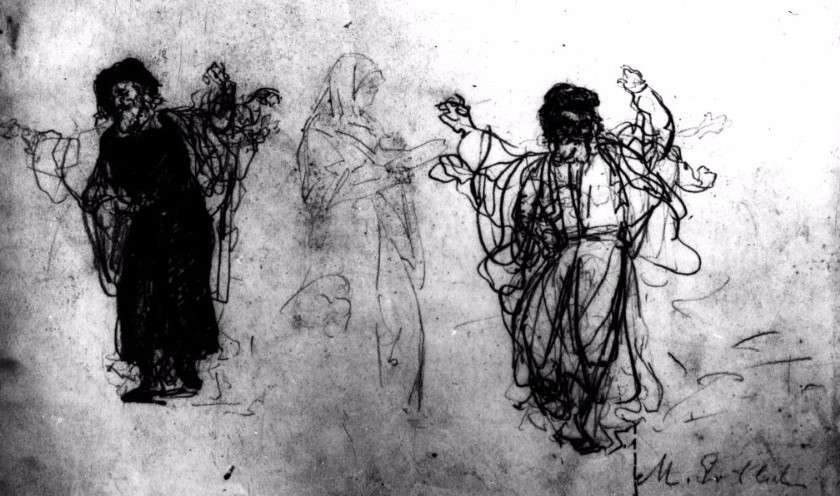
Omer Bartov is far more convincing when it comes to Jewish beliefs and legends. Galicia was one of the main centers of Hasidism, which sprang up in the 17th century as a result of the massacres perpetrated by Bogdan Khmelnitsky, the scattering of Jewish communities and their isolation from the great centers of learning such as Wilno (Vilna, Vilnius) in the north. Faith, superstition and legend were the intangible links that united the Jews and made them a special nation, pitting their spirituality against the strength and power of the weapons used by the peoples with whom they lived, Ruthenians and Poles, until the day, where with the Spring of the Peoples and the birth of nations, “everyone began to take a dim view of the others, not only through their religious distinctions, but also by wondering whether the history of these neighbors gave them the right to continue living where they were” (p. 207).
Prior to this date, during the two centuries between the massacres of the 17th century and the People’s Spring revolution of 1848, and even beyond, until the First World War, these three communities enjoyed a golden age, as witnessed by the phenomena of cultural osmosis and exchange, particularly in the field of popular culture. The cases of religious and cultural syncretism are the most relevant because of their importance in structuring the nostalgia for this “Eden-like” country felt by those who, like Bartov, have only photos and snatches of memory as a viaticum. Thus, as he recalls, Agnon attributes Jewish origins in one of his stories to the sculptor Theodore, who made the statues adorning the Buczacz town hall erected in 1751 (pp. 127-129).
The passage is of great beauty. Abducted by “men in black” as a child, a Jewish child is taken to a master craftsman who gives him the first name of Theodore and teaches him the trade of sculpting. Theodore became famous, and his great mastery of his art prompted the town magistrate, Mikołaj, to call on him to build the town hall:
“And Theodore built it, adorning the building with mascarons inspired by the faces, male and female, seen in the city and in his dreams. Ever since he had seen the synagogue on the eve of Yom Kippur, these faces had never left him, whether he had dreamt them or actually seen them in the Jewish street in Buczacz. And Theodore fashioned with his hands what his eyes and heart had gazed upon[3]”.
Regardless of whether the sculptor was a crypto-Jew or not, the legend prevails over historical reality and illustrates how Jews incorporated foreign objects into their daily lives in order to blend into the landscape while retaining their identity.
Faith, superstition and legend were the intangible links that united the Jews and made them a special nation, pitting their spirituality against the strength and power of the weapons used by the peoples with whom they lived.
The many references to the work of Agnon, who stayed in London with Omer Bartov’s parents after receiving the Nobel Prize for Literature in 1966, give structure to the text and form the common thread that unites the different parts of a work organized according to an orthonormal system whose two vectors, that of space and time, are Buczacz and Agnon respectively. The adoption of such a geometry allows Bartov to make connections in time and space and, ultimately, to integrate the story or stories about Buczacz and the landscape of the city itself within the limits of his own spatiality and biography. At the start of his study, he explains, for example, how Natan Hanover’s Yeven Mezulah (The Bottom of the Abyss), about the pogroms perpetrated by Bogdan Khmelnitsky’s Cossacks in Galicia, was republished in 1920 in Palestine on the initiative of the poet Chaim Bialik, who died in 1934. Bartov’s paternal grandfather attended his funeral, missing a day’s work in the process (p. 58). This family memory is followed by a more personal one. Bartov recalls how, for those of his generation born in Israel immediately after the Shoah, Bialik’s poem In the city of Slaughter, written after the Kishinev pogrom in 1903, with its unbearable descriptions of bashed-in skulls and rapes perpetrated in full view of passive Jewish men, too terrified to intervene and defend their mothers and sisters, was hijacked by Zionist propaganda to “justify violence for the purpose of self-preservation, as an individual or as a nation, in the name of both the right to exist and national pride” (p. 63).
I feel it necessary to quote extracts from this poem. The text remains tragically topical. Reading it, one cannot help but be reminded of the massacres perpetrated by Hamas on October 7, 2023 [In the city of Slaughter was republished in full by K. in October 2023]. Omer Bartov wrote his book long before these “events” and therefore could not have imagined the correspondence between the description of the Kishinev pogrom and the scenes of violence filmed by Palestinian terrorists:
« Get up and walk through the city of the massacre,
And with your hand touch and lock your eyes
On the cooled brain and clots of blood
Dried on tree trunks, rocks, and fences; it is they (…).
His eyes beheld these things; and with his web he can
A tale unfold horrific to the ear of man:
A tale of cloven belly, feather-filled;
Of nostrils nailed, of skull-bones bashed and spilled, (…)
And of a babe beside its mother flung,
Its mother speared, the poor chick finding rest
Upon its mother’s cold and milkless breast (…)
In that dark corner, and behind that cask
Crouched husbands, bridegrooms, brothers, peering from the cracks,
Watching the sacred bodies struggling underneath
The bestial breath,
Stifled in filth, and swallowing their blood. »
Commenting on this passage, Omer Bartov points out that the same sense of anger and desolation runs through the introduction written by poet, editor and translator Yaakov Fichman to the 1944-1945 edition of Yeven Metsulah. Drawing a parallel between the Khmelnitsky violence, the Kishinev pogrom and the Holocaust, Fishman instrumentalized the contents of the Yeven Metsulah for Zionist ends, according to Bartov, to stigmatize, unjustly, the passivity of the Jewish masses, and assert “Never again”, never again a massacre without a fight:
“They [Jewish men],” Fishman writes, “haven’t moved; they’re still waiting for someone to stand up and save them, and they haven’t understood that Israel’s future, their lives, and more than their lives, depend on our willingness to donate our bodies and our souls.” (p.69)
The aim is now to show that, by crossing the Mediterranean, the Jews have not simply made a translation in space, they have become the exact opposite incarnation of their ancestors who composed a spiritual nation.
What is just a little background music, Israel, becomes one of the main leitmotifs of the fourth part, in which Omer Bartov transcribes his mother’s account of her past in Buczacz and her move to Palestine in 1935, before the declaration of independence of the State of Israel in 1948. In this other “Ek velt” (p. 413), the polarities are reversed, as Bartov illustrates with a reference to Kafka’s short story “Jackals and Arabs” published in 1920. As a reminder, in this short story – which Kafka did not want to turn into a parable, as Bartov also points out (p. 354) – some men from the North are resting in an oasis when an old jackal approaches one of them, the narrator. The old jackal seems to recognize the messiah in the man from the North (“We’ve been waiting for you for an infinite time.”). He harbors a deep contempt for the Arabs (“You can’t get a spark of intelligence out of them. They kill animals to eat them, and they despise carrion”) and asks the narrator to help free the desert from the presence of Arabs (“The Arabs must grant us peace; breathable air; a purified horizon, without any of them within sight; without the slightest moan of a sheep slaughtered by an Arab”).
While recalling Kafka’s view that this novella should be seen for what it is, that the jackals were really jackals, and that the whole was not a parable, Omer Bartov amply echoes the terms of a recent interpretation by Dimitry Shumsky, asserting that the jackals symbolize “as much the unease of the Jews in the multi-ethnic context of Eastern Europe (…) as the challenge faced by the Zionist settlers. (…) Palestinian Arabs are the people who saw their country colonized by Jews from Europe like my mother and her family.”[4]
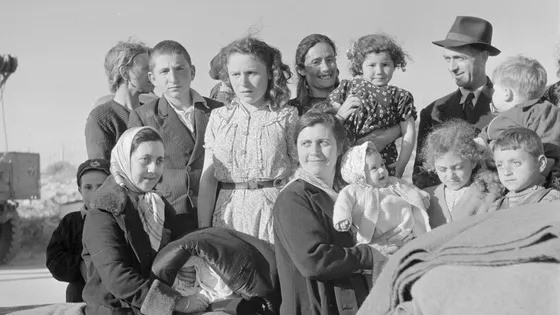
The writing project for Tales from the Bonderlands. Making und Unmaking the Galician Past takes on a new direction. The aim is now to show that, by crossing the Mediterranean, the Jews have not simply made a translation in space, they have become the exact opposite incarnation of their ancestors who composed a spiritual nation. According to Bartov, the precursors to this mutation were to be found in Zionist ideology, but it was fully realized at the time of the Six-Day War. A year earlier, persecuted by children on the London Underground, he had been defended by friends from his Jewish school, who had – the words are important – carried out “a punitive raid” against his persecutors. However, young Bartov and his comrades were reprimanded by the principal of their school, who felt that their action had been too aggressive. The historian draws a link between the violence of his classmates and that of Israel in its conflict with Egypt, Jordan and Syria: “Shortly afterwards, the Six-Day War transformed Israel into a country ready to retaliate as disproportionately as it wished. It never recovered from this victory and the ensuing occupation, acquiring over time the traits of a brute who knows that nothing will happen to it (…) It was a useful lesson for me in what antisemitism is and how to respond to it. It also taught me something about the relationship between context and events, place and prejudice.”
These words about context are ambiguous, and I wish Omer Bartov had clarified them to clear up any possible misunderstanding. Are we to understand that context guides our judgment and appreciation of facts, and more specifically of violent events, and that, all in all, what appears to be a violent antisemitism act is not necessarily to be considered as such, always depending on the setting and the situation?
The formulation of this consideration is vague and lacks clarity. This remark can be extended to the book as a whole, to its structure: is it a history book, a literary study, an analysis of the importance of storytelling in intercultural exchanges and the formation of national identities, an essay on the vanished world of Buczacz or on the mutation of the people of Israel into “thick, arrogant brutes”? It is to be feared that imprecision is detrimental to a proper understanding of Making und Unmaking the Past.
Omer Bartov may well consider Gogol to be a Ukrainian writer, without even considering whether the latter’s use of Russian implies at least some precision. He may also fail to mention the great story-collecting campaigns carried out in Galicia at the end of the second half of the 19th century by Polish, Ukrainian and Jewish ethnologists. An-Ski, the founding father of Jewish ethnology, is not mentioned, despite his expeditions to Volhynia and Galicia. But it’s not certain that the lability of a work oscillating between literary analysis, historical study and psychological introspection, all embellished with definitive statements about Israel, contributes to understanding how the past was made and unmade in Ukraine and Galicia – and how, incidentally, the present is made in Israel.
Boris Czerny
Notes
| 1 | Born in Israel, Omer Bartov studied at Tel Aviv University and St Antony College, Oxford. He has held positions at prestigious institutions such as Harvard and the Maison des Sciences de l’Homme in Paris. He now teaches at Brown University in the USA. Omer Bartov is an academic renowned for the scientific quality of his studies on the role of the Wehrmacht in the Second World War, as well as for his publications on interethnic relations in Ukrainian Galicia, and in the border town of Buczacz in particular. Two of Omer Bartov’s books have been translated into French: Hitler’s Army: Soldiers, Nazis, and War in the Third Reich, Oxford Paperbacks, 1992 (L’Armée d’Hitler, La Wermacht, les nazis et la guerre, Hachette Littérature, 1999); Anatomy of a Genocide, The Life and death in a town called Buczacz, New-York, Toronto, Sydney, Simon and Schuster, 2018 (Anatomie d’un génocide, vie et mort dans une ville nommée Buczacz, Plein jour, 2021). |
| 2 | Voices on War and Genocide: Three Accounts of the World Wars in a Galician Town, New York Oxfrord, Berghahn, 2020. |
| 3 | P.129 Agnon, Ir u-melo’ah, p. 235-236. |
| 4 | Dimitry Shumsky, “Czechs, Germans, Arabs, Jews”, Association of Jewish studies Reviews, 2009, 33 (1), pp. 71-100. |

